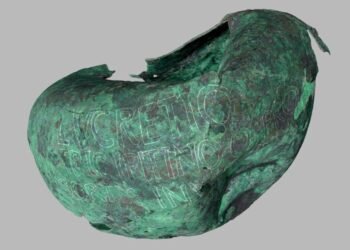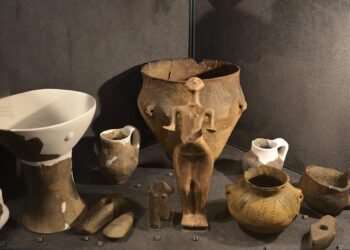Professor of Anatomy, University of Bristol — In recent years, skulls, bones, and even modified human remains have appeared with increasing frequency on online marketplaces and social media platforms. What might once have been confined to specialist collectors has become a global, online trade.
The market is fuelled by diverse groups of buyers. Some are traditional collectors of curiosities, others are ritual practitioners. And a smaller number of contemporary artists and designers buy human remains to incorporate into sculptures or installations, raising concerns about the use of the body as raw material. There are also medical and dental students, some of whom still seek real skulls for their own study, unaware of the legal and ethical pitfalls.
Perhaps the most striking development is the rise of casual consumers inspired by social media. The aesthetic known as “dark academia” has helped to drive this surge. Blending gothic literature, candlelit libraries, vintage tailoring and scholarly mystique, it presents bones as fashionable props. On Instagram (#SkullDecor) and TikTok (#OdditiesTok), users pose with skeletons in the same way they might with antique books or candlelight, transforming skulls into lifestyle decor.

This trend is troubling because it normalises ownership of human remains and blurs the line between objects of study and human individuals. By aestheticising death, it risks eroding the ethical safeguards that once protected the dead from exploitation. The surge has prompted alarm among archaeologists, anthropologists, and anatomists. The British Association for Biological Anthropology and Osteoarchaeology has spearheaded a campaign to curb the trade, warning that it not only exploits the dead but also risks commodifying them. Yet the legal framework is equally complex, leaving many sellers operating in a grey area.
In the UK, the law is fragmented. The Human Tissue Act 2004 regulates the use of bodies donated for anatomical education, teaching and research, but only applies to remains less than 100 years old. Anything older falls outside its scope.
This century cut-off creates a loophole: a skull described as “Victorian” can be sold, even if its provenance is doubtful. Sellers may exploit this grey area, and buyers rarely question such claims.
Sidestepping jurisdictions
Elsewhere, laws are inconsistent. In the US, Native American remains are protected under federal legislation, yet state laws vary widely and online sales often slip through the net. The global nature of the trade makes enforcement harder still: a skull listed in the UK can be shipped abroad with little difficulty, sidestepping different national jurisdictions.
The question of origin is central. The Anatomy Act of 1832 was intended to end grave robbing in Britain by providing a legal supply of bodies – those unclaimed in hospitals, prisons and workhouses – while also making body donation legal. But demand soon outstripped supply, as evidenced by the work of the resurrectionists, and by the late 19th-century Britain looked abroad for bones.

India became the world’s largest exporter, sending an estimated 60,000 skeletons overseas in 1984 alone. Many came from impoverished communities who could not afford cremation or burial, while others were stolen from cemeteries.
Grave robbing was common, and the trade remained deeply tied to colonial structures. Even after independence in 1947, India remained Britain’s main supplier until a scandal in 1985 revealed the export of 1,500 child skeletons, raising fears of kidnapping and murder. The Indian government swiftly banned the trade. China then became the leading exporter until it too banned exports in 2008.
This history shows that many of the bones circulating today in collections, and sometimes resurfacing on the open market, were acquired in ways that were profoundly exploitative.
Provenance is everything, yet often absent. While many bones circulating today are former anatomical specimens, the scale of demand has clearly encouraged more nefarious means of procurement, and grave robbing has seen a resurgence.
Museums and teaching collections usually keep detailed acquisition records, so bones offered without documentation raise immediate red flags. Anatomical specimens also tend to show signs of preparation, such as drilled holes, varnish or metal fittings.

By contrast, remains taken from graves often display soil staining, root etching, or microfractures caused by long-term burial. Fragments of coffin wood, nails or textiles may still cling to them. These differences are not always conclusive, but together they suggest whether a skeleton was prepared for study or exhumed illicitly.
Beyond legality lies a more fundamental question: should human remains ever be sold at all? Human remains are not ornaments or lifestyle accessories—they are the material traces of people’s lives.
The commodification of human remains sits at the uneasy intersection of law, science and ethics. The trade thrives because of loopholes and because platforms profit from traffic even when listings violate their own policies. At its heart, this is not a legal issue so much as one of respect.
Human remains, whether ancient or recent, represent lives once lived. They carry stories of identity, community and mortality. Treating them as commodities diminishes both the individuals they once were and the societies we live in today. As calls for reform continue, the challenge is to shift attitudes away from possession and decorative display toward recognition of the dignity owed to the dead.
This article is republished from The Conversation under a Creative Commons license. You can read the original article here.
























Comments 0